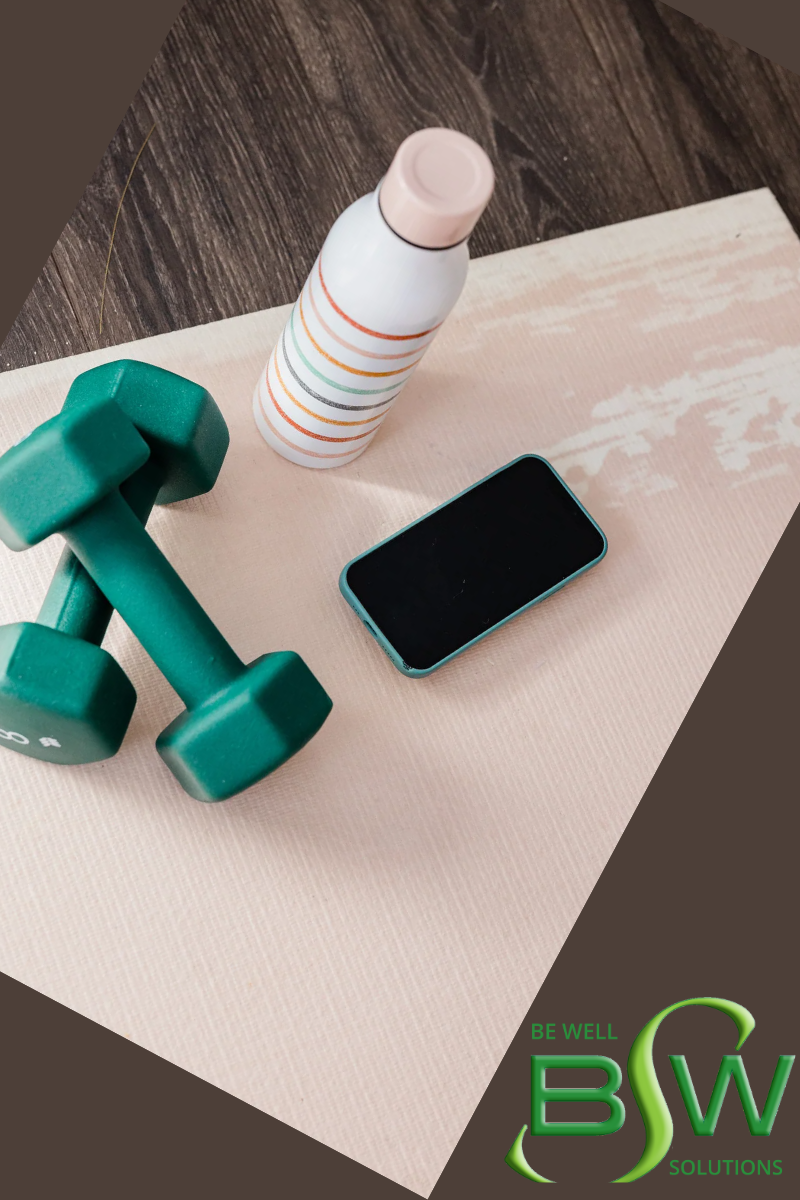
Putting together a balanced workout plan can feel daunting. Following the FITT principle is an effective way to make that task easier. FITT stands for the Frequency, Intensity, Time, and Type of your workout. It helps you design a routine that incorporates a variety of necessary exercises while tailoring it to your personal needs and goals.
Frequency
Frequency addresses how often you will plan to exercise. The American College of Sports Medicine recommends at least 150 minutes of moderate-intense aerobic exercise along with at least two days of strength training exercises each week. If you’re beginning an exercise routine or it’s been a while since you’ve exercised consistently, you should gradually build up to this recommended amount.
For Aerobic Exercise: Break up your cardio minutes however you wish. On average, you could aim for about thirty minutes of exercise five to six days per week. However, you might find some days you only have twenty minutes, or other days you might have an hour. You can also vary your frequency based on your intensity. If you incorporate a few higher-intensity workouts, you won’t need to work out as long or as frequently.
For Strength Exercise: Remember to plan your rest days. At least one rest day is recommended between strength sessions of the same muscle group. For example, if you do upper body exercises on a Monday, wait until at least Wednesday or Thursday before doing upper body again. This allows time for those muscles to recover adequately and become stronger.
When choosing frequency, think about your schedule and when you will realistically fit in your exercise. Also, consider planning a makeup day in case you need to skip or alter a session.
Intensity
Your intensity focuses on the difficulty of your exercise. Recommendations are based on moderate intensity. However, intensity can vary based on experience, athletic ability, and personal goals. Varying intensity throughout the week can be a good practice. It allows your body to adjust to the activity and avoids burnout from working too hard.
For Aerobic Exercise: Intensity can be varied by adjusting speed, resistance, or incline. You can use a quick method such as a talk test to gauge your personal intensity. Below is a quick breakdown of the talk test:
Low-Intensity Exercise – You can talk in Complete sentences, hum, or sing.
Moderate-Intensity Exercise – You can talk in short sentences. Most likely cannot hum or sing.
High-Intensity Exercise – Talking is difficult. If you’re able to talk, you will likely have to take a breath between each word.
For Strength Exercise: Intensity can vary by changing the amount of weight lifted, the number of repetitions completed, or the number of sets completed. Always watch your form as you make intensity changes. You should be able to complete every repetition with the correct form, even as the exercise becomes more difficult. If you cannot keep proper form, lower your intensity by decreasing one of the parameters.
Always consult your doctor about the appropriate exercise intensity before beginning and if they recommend monitoring heart rate too.
Time
Time refers to the length of each exercise session. It can certainly vary from day to day and should be based on the activities completed. Keep in mind the general exercise recommendations mentioned above for aerobic and strength exercise. Aim to gradually work towards meeting those guidelines. Plan rest days to avoid overtraining. Listen to your body and adjust the time spent exercising accordingly.
Type
Type refers to the kind of exercise you will participate in during your session. There are many types of aerobic and strength exercises. Choosing a variety can be beneficial in many ways. It keeps your body from getting too used to any one exercise, helps you avoid plateaus, and lowers the risk of injuries from overtraining. Aerobic exercises aim to increase the heart rate and keep it elevated for an extended period or vary between higher and lower heart rates, as in interval training. Strength training focuses on increasing the strength and endurance of specific muscle groups. Below are several examples of various types of aerobic and strength exercises.
Types of Aerobic Exercises
Walking
Running
Cycling
Hiking
Running
Swimming
Strength Exercises Can Utilize
Dumbbells
Barbells
Medicine Balls
Kettlebells
Resistance Bands
Bodyweight
The FITT principle is a great way to cover all aspects of planning a workout. It can be helpful when you’re beginning to exercise for the first time. However, it can also help progress your routine and keep it from getting boring.
Always consult with your physician before starting a new exercise program.
Written by BWS Lead Health Coach- Kelly Schlather, BS, ASCM – CEP
Continue reading April 2023 Newsletter: 5 Ways to Change the Stigma of Mental Health
